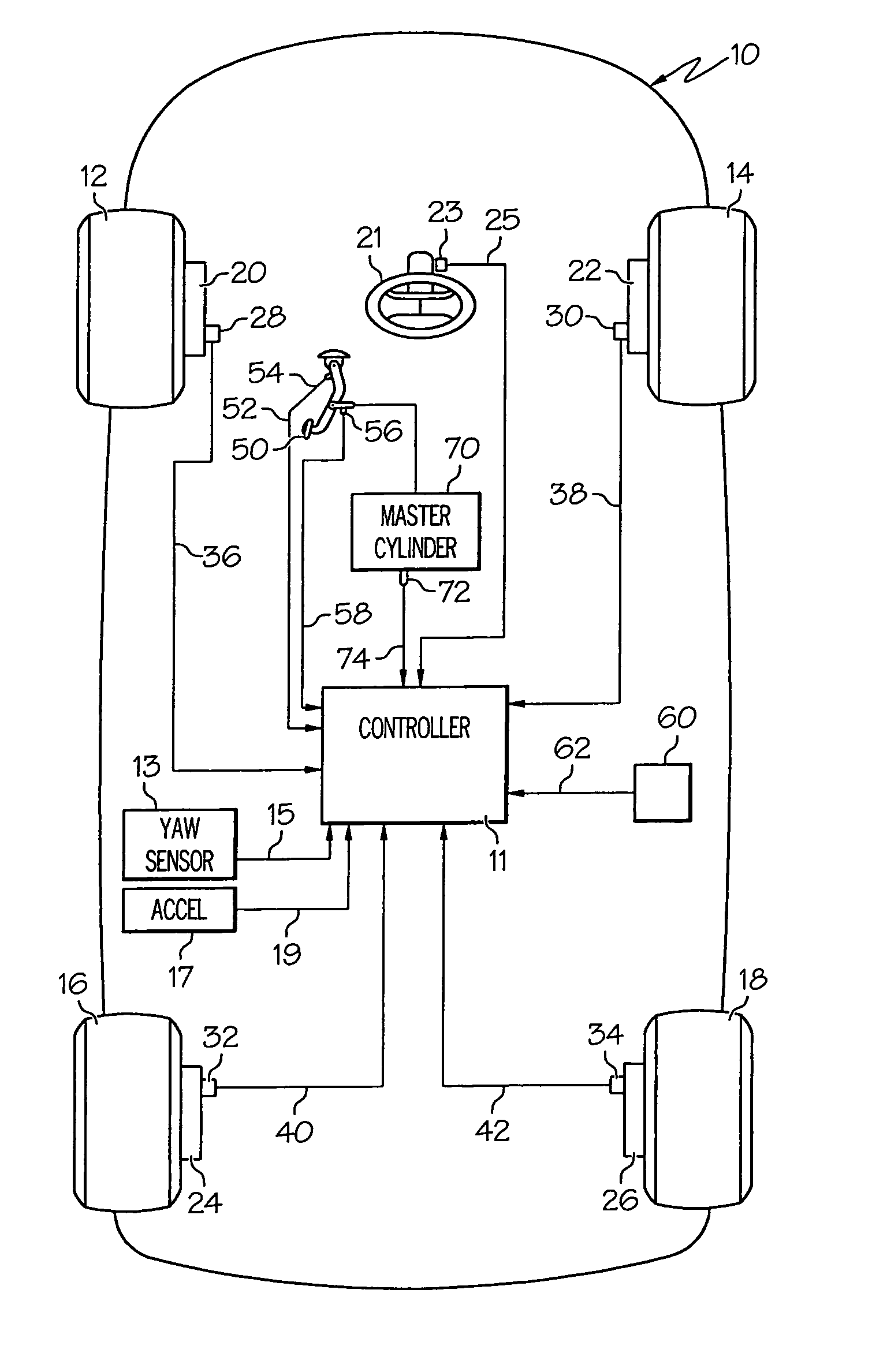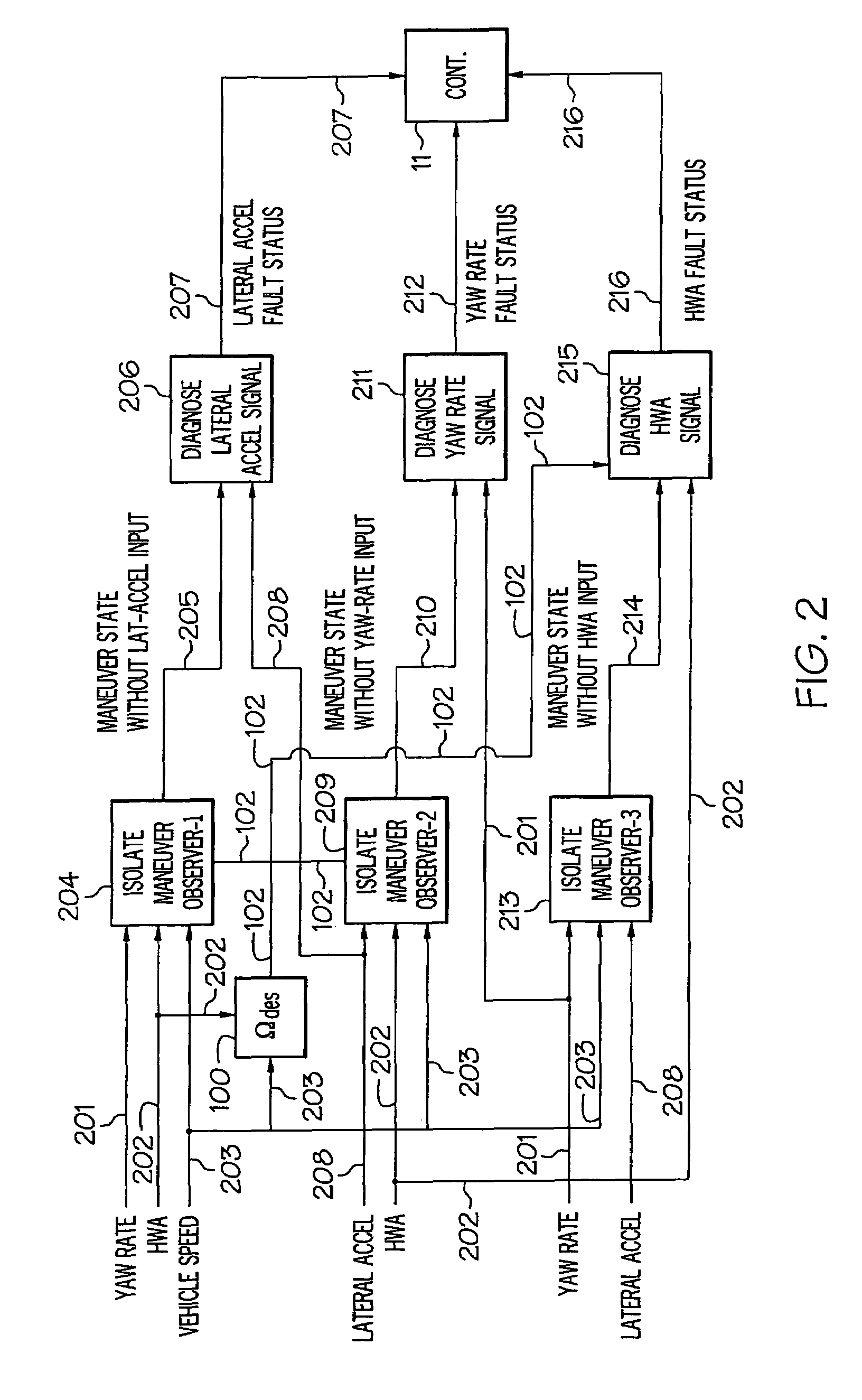Adaptive maneuver based diagnostics for vehicle dynamics
a vehicle dynamics and adaptive maneuvering technology, applied in the field of vehicle stability control, can solve the problems of erroneous sensor output, more difficult to detect, and limited measurement range, and achieve the effect of increasing coverag
- Summary
- Abstract
- Description
- Claims
- Application Information
AI Technical Summary
Benefits of technology
Problems solved by technology
Method used
Image
Examples
example 1
[0074]The above strategy was tested exhaustively in simulation using a validated vehicle simulation model representing a pick up truck with a hydraulic brake system. The tests included steady state linear and aggressive emergency maneuvers on different surfaces. The results did not show any false diagnosis of a sensor fault. And when a fault was injected, it was isolated and detected correctly within the required fault response time specified by the system safety hazard analysis activity.
[0075]In Example 1, the vehicle was placed in a transient emergency maneuver condition on a slippery, icy surface, and the algorithm results (see FIGS. 6-14) showed all observers (see FIGS. 9 and 13-14) successfully identified the maneuver state and the diagnostics (see FIG. 8) did not falsely declare a fault.
example 2
[0076]In Example 2, the vehicle was located on a dry surface having a constant radius turning maneuver condition wherein a slow changing lateral acceleration fault was injected (see FIG. 16), and the algorithm results (see FIGS. 15-22) showed all observers (see FIG. 18) successfully identified the maneuver state (i.e., without a measured lateral acceleration input) and the diagnostics (see FIG. 18) successfully detected the lateral acceleration signal fault.
example 3
[0077]In Example 3, the vehicle was located on a dry surface having a straight driving maneuver condition wherein a yaw rate fault was injected (see FIG. 28), and the algorithm results (see FIGS. 23-33) showed all observers (see FIG. 26) successfully identified the maneuver state (i.e., without a measured yaw rate input) and the diagnostics (see FIG. 26) successfully detected the yaw rate signal fault.
PUM
 Login to View More
Login to View More Abstract
Description
Claims
Application Information
 Login to View More
Login to View More - R&D
- Intellectual Property
- Life Sciences
- Materials
- Tech Scout
- Unparalleled Data Quality
- Higher Quality Content
- 60% Fewer Hallucinations
Browse by: Latest US Patents, China's latest patents, Technical Efficacy Thesaurus, Application Domain, Technology Topic, Popular Technical Reports.
© 2025 PatSnap. All rights reserved.Legal|Privacy policy|Modern Slavery Act Transparency Statement|Sitemap|About US| Contact US: help@patsnap.com



